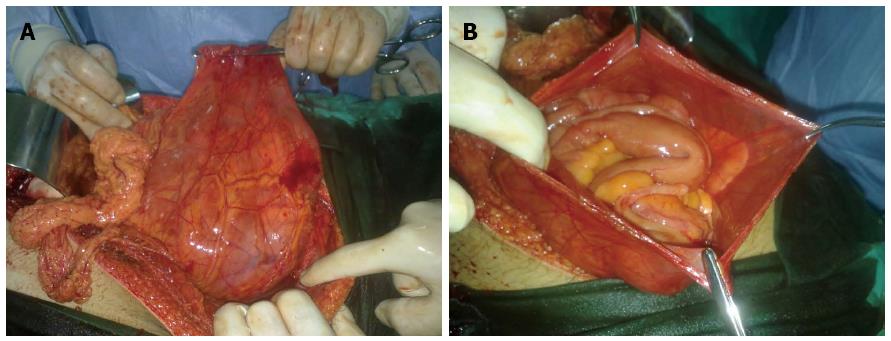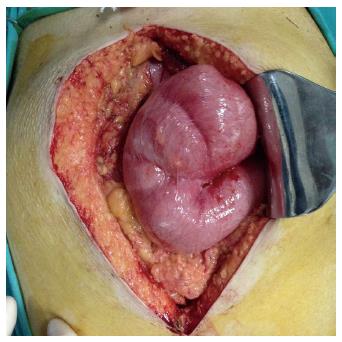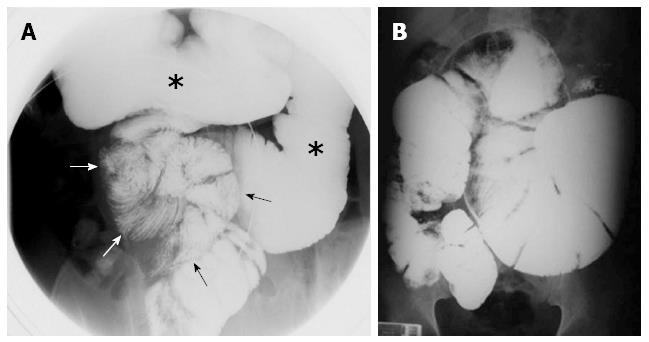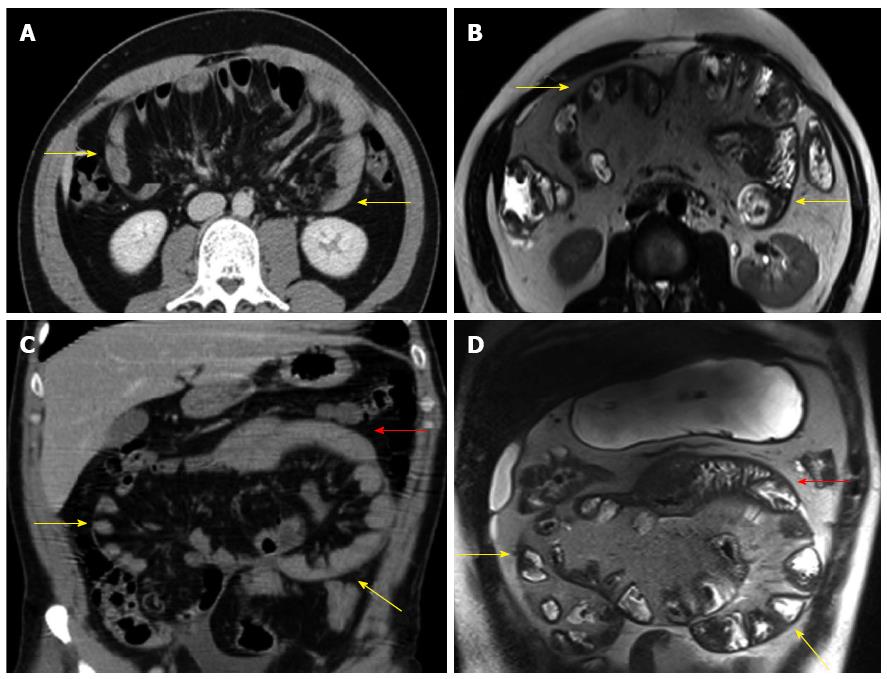Copyright
©The Author(s) 2015.
World J Gastroenterol. Jan 14, 2015; 21(2): 675-687
Published online Jan 14, 2015. doi: 10.3748/wjg.v21.i2.675
Published online Jan 14, 2015. doi: 10.3748/wjg.v21.i2.675
Figure 1 Bowel encased in a membranous sac suggestive of peritoneal encapsulation.
A: The overall appearance of the membranous sac is shown. All intestines are localized behind the accessory peritoneal membrane; B: The appearance of the opened membranous sac is shown.
Figure 2 Intraoperative photograph showing the encapsulated small bowel (dense, cocoon-like fibrous membrane).
Figure 3 Small bowel transit.
Procubitus image with localized compression. Liquid distension of the gastroduodenum (asterisks) and adhesion of the small intestinal loops (arrows) are persistent despite localized compression, producing a “cauliflower” appearance[24]; B: Upper gastrointestinal images reveal dilatation of the duodenum and jejunal loops, delayed bowel transit, and failure of the oral contrast to pass distally[38].
Figure 4 Contrast-enhanced abdominal computed tomography[24].
Small intestinal loops are encased in a sac of thick peritoneal membrane (continuous arrows) with a small volume of peritoneal liquid effusion (discontinuous arrow). Gastroduodenal distension is also present (asterisks). A: Axial slice; B: Multiplanar coronal reconstruction.
Figure 5 Comparison of diagnostic features on computed tomography and magnetic resonance images[5].
A: Computed tomography scan in the axial plane showing a subtotal conglomeration of small bowel loops coiled in a concertina-like fashion and encased by a thick membrane (yellow arrows); B: T2-weighted magnetic resonance imaging sequence in the axial plane showing bowel loops aggregated in a festoon-like shape and encased by a thick membrane (yellow arrows); C: Computed tomography scan in the coronal plane showing the conglomeration of small bowls loops (yellow arrows); a few free loops are present in the upper quadrant (red arrow); D: T2-weighted magnetic resonance imaging sequence in the coronal plane showing the same conglomerated small bowel loops (yellow arrows) and a few free bowel loops (red arrow).
Figure 6 Laparoscopic view of the entire bowel segment encased with a fibrocollagenous membrane[37].
- Citation: Akbulut S. Accurate definition and management of idiopathic sclerosing encapsulating peritonitis. World J Gastroenterol 2015; 21(2): 675-687
- URL: https://www.wjgnet.com/1007-9327/full/v21/i2/675.htm
- DOI: https://dx.doi.org/10.3748/wjg.v21.i2.675














